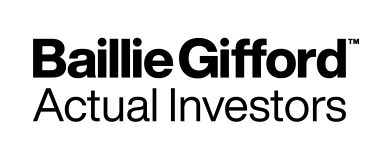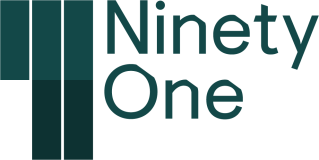HUB EXCLUSIVES PANEL DISCUSSION – INTEREST RATES AND INFLATION
Panel discussion, hosted by Cherry Reynard, with:
Adam Darling, Investment Manager, Fixed Income, Jupiter Asset Management
Neil Birrell, Chief Investment Officer, Premier Miton Investors
Sree Kochugovindan, Senior Research Economist, abrdn
Richard Carlyle, Investment Director, Capital Group
The trajectory of inflation and interest rates has dominated financial market movements over the past 12 months. At the moment, investors are betting that the global economy will have a soft landing, but also that there will be rate cuts in the year ahead. Is this Goldilocks scenario the most plausible for the year ahead?
Headline inflation has started to drop meaningfully in recent months. However, core inflation has proved stickier, particularly in the UK, with services inflation still relatively high. Services inflation has been held up by rising wages, but there are signs across all major economies that labour markets are starting to weaken.
Neil Birrell, chief investment officer at Premier Miton Investors, says: “Services will be key for the year ahead. Restrictive policy should dampen demand for services and we’ll see this start to kick in. Globally, it looks like China and Europe are the areas where there are more deflationary elements around. The bottom line is that it has got to come down, but it won’t be in a straight line and it is not yet clear where it will land.”
He believes that in the longer term, inflation is likely to be structurally higher than it has been over the past two decades. Richard Carlyle, investment director at Capital Group agrees. He says: “Our sense is that inflation will be more volatile from here, though it does appear to be past the worst.”
Against that backdrop, interest rates have almost certainly peaked. However, the key problem is that markets remain unprepared for any alternative scenario. Carlyle says: “If inflation spiked up for any reason, that would not be received well by markets. The rallies we’ve had recently have been predicated on the next move in interest rates being down.”
What factors could push rates higher again? Adam Darling, investment manager, fixed income at Jupiter Asset Management, suggests commodity markets may be the vulnerable spot. He says: “We agree that the monetary tightening we’ve had has already broken the back of inflation. However, there is a lot going on with geopolitics at the moment, so in terms of the tail-risk scenarios that might upset markets, oil is key. It is relatively recent that economists were discussing the risk of oil going to $150 with the war in the Middle East.” For the time being, the oil price is continuing to fall, he says, which suggests some weakness in the global economy, particularly manufacturing.
Darling also believes a stimulus package from the Chinese government could be a factor. China has had some economic difficulties and if the government chose to do something aggressive on the economy, it could trigger inflationary pressures across the world.
He adds: “The last thing is the political cycle. Are we going to see Janet Yellen try and stimulate the US economy ahead of the election? It’s not what we believe. We think rates are high enough, but we’re not complacent, because we’re in a more volatile environment than we’ve seen for the last two years.”
Rate cuts?
In recent weeks, financial markets have grown increasingly excited at the prospect of rate cuts in 2024, driving an end of year rally. However, rate cuts remain far from assured. Sree Kochugovindan, senior research economist at abrdn, says: “We’re seeing a disinflationary trend, but those final stages of inflation are likely to be quite bumpy. The pandemic and war-related drivers are starting to unwind, commodity prices have fallen and supply chains have improved. The labour market is likely to be the final part of that story. The timing of rate cuts will depend on inflation and activity data.”
She says that some economies are starting to see tighter financial conditions emerge. In particular, European inflation has come down rapidly, and more rapidly than the ECB had forecast: “April seems likely for the first rate cut and then a steady pace of cuts in the rest of the year and into 2025.”
She believes the UK and US central banks may act a little bit later, adding: “In the US, we haven’t seen that much tightening feed through. There has been a savings buffer and the labour market has been stronger. It is likely to be the second half of the year before rate cuts come through.”
Bond markets may do some of the heavy-lifting on rate cuts. Expectations of rate cuts are already reflected in the bond market, which is driving lower borrowing rates for corporates and homeowners. Birrell says: “There are three key areas – consumer spending, corporate spending, government spending – all those three areas need to borrow money and are priced from the bond yields.”
Divergence
There is unlikely to be significant divergence on rates between the major economies of the US, UK and Europe. The outliers are in Latin America and Japan. Kochugovindan says: “Latin America embarked on much earlier interest rate rises and tackled inflation sooner. Some have started their easing cycle much sooner.”
“Japan is quite an outlier, and has been for many years. This is the first time it has breached its inflation targets. It may have seen the peak, but inflation is still around 4% year on year. However, it’s not clear whether it’s sustainable. Even the smallest change in interest rate policy could be of symbolic importance.”
The consensus is that interest rates have peaked and should start to move lower in 2024. However, there remains a question over whether markets are prepared for any other scenario – either a harder landing or a revival in inflation. If either of these scenarios materialise, it could destabilise markets in the year ahead.









